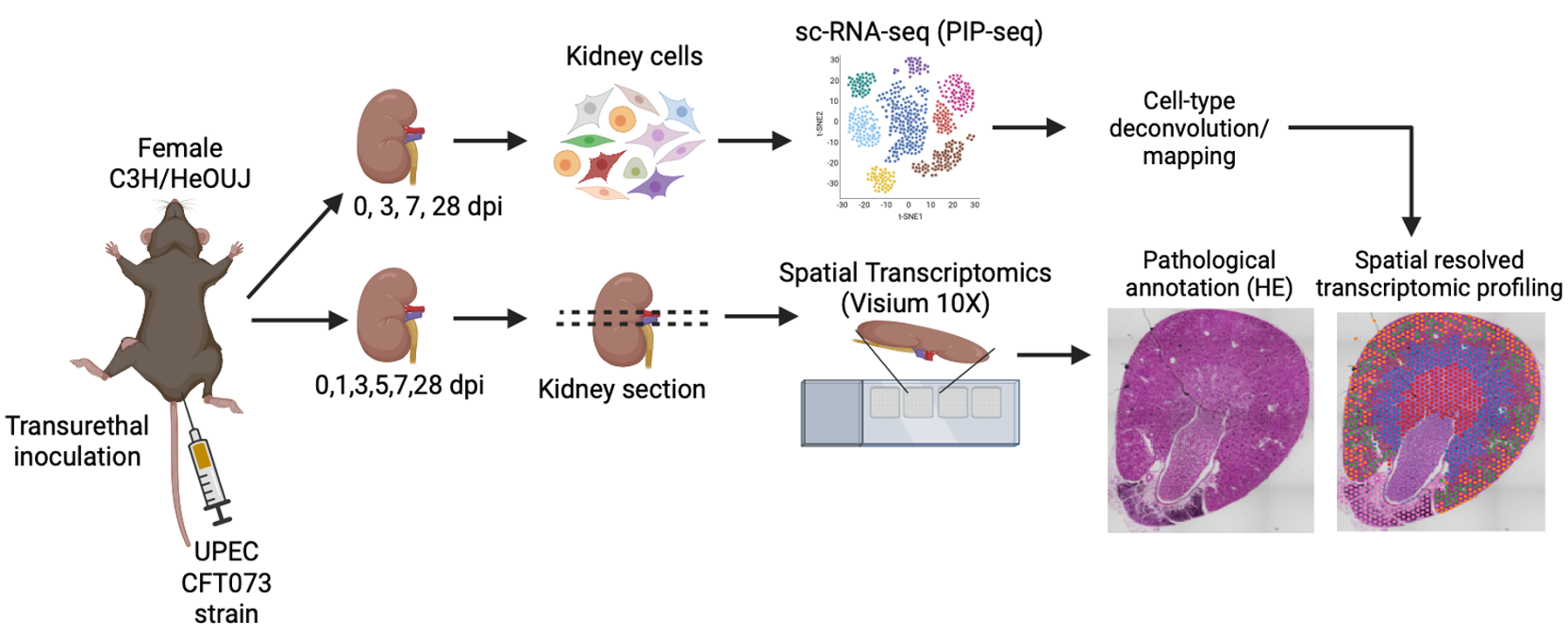Spatial Map of Mouse Pyelonephritis
We generate a comprhensively high resolution spatial map of mouse kidney after UPEC within different dates
Introduction
Pyelonephritis, a condition initiated by the infiltration of bacteria into the kidneys through the bloodstream or the ureter—the tube connecting the bladder to the kidneys—is a grave medical concern. Failing to address this condition promptly can result in kidney damage and various complications. Typical symptoms of pyelonephritis encompass fever, chills, nausea, vomiting, abdominal pain, and discomfort in the back, side, or groin area. Annually, pyelonephritis accounts for a substantial number of cases, with 1,138,000 reported instances and an associated societal cost exceeding $2.14 billion in the United States. Uropathogenic Escherichia coli (UPEC) stands out as the predominant causative agent, being responsible for over 80% of pyelonephritis cases. If left untreated, pyelonephritis can lead to severe consequences, including kidney injury, renal scarring, progressive loss of kidney function, hypertension, and, ultimately, end-stage renal disease. Immediate and appropriate medical intervention is crucial to mitigate the potential complications associated with pyelonephritis.


Method


Pyelonephritis RShiny App
The Spatial Pyelonephritis RShiny application has been meticulously crafted with the explicit purpose of providing researchers, spanning both wet and dry lab domains, a powerful platform for conducting downstream Bioinformatics analyses with utmost efficiency and precision. Tailored to meet the diverse needs of researchers, this application boasts two comprehensive modules, each designed to streamline and enhance the analytical process.
The Spatial Pyelonephritis RShiny application is equipped with an intuitive and user-friendly interface, allowing researchers to navigate complex analyses with ease and efficiency. With interactive visualizations and customizable workflows, users can tailor their analytical approach to suit specific research objectives, fostering collaboration and accelerating scientific discoveries in the field of pyelonephritis research.
Please access to the Pyelonephritis website link:
Pyelonephritis RShiny App and Website
Github
You can also access to the project details in my github: